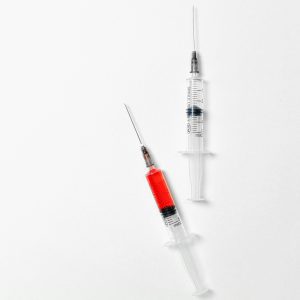
- What Is Tachycardia?
- Brief History of Tachycardia
- What Causes Tachycardia?
- What Are the Symptoms of Tachycardia?
- How is Tachycardia Diagnosed?
- What Are the Different Types of Tachycardia?
- How is Tachycardia Treated?
- Can Tachycardia be Prevented?
- Is Tachycardia Life-Threatening?
- Websites and Articles to Delve into the Aspects of Tachycardia
- Summary
What Is Tachycardia?
Tachycardia is a medical condition characterized by an abnormally fast heart rate, typically exceeding the normal resting rate. The normal heart rate for adults is around 60 to 100 beats per minute at rest. Tachycardia occurs when the heart beats at a rate higher than 100 beats per minute.
There are various types of tachycardia, each with different causes and manifestations. Some common forms include atrial fibrillation, supraventricular tachycardia (SVT), and ventricular tachycardia. Tachycardia can be temporary or persistent, and its onset may be due to factors such as stress, heart-related conditions, anemia, fever, or the use of stimulants.
Symptoms of tachycardia can include palpitations, chest discomfort, dizziness, shortness of breath, and fatigue. In some cases, tachycardia may not cause noticeable symptoms and is only identified through medical examinations or monitoring.
Management of tachycardia depends on its underlying cause. Treatment options may include medications, lifestyle modifications, or medical procedures such as cardioversion or catheter ablation. It is crucial for individuals experiencing symptoms of tachycardia to seek medical attention for a proper diagnosis and appropriate management.
Brief History of Tachycardia
The history of tachycardia is intertwined with the broader understanding of cardiovascular physiology and advancements in medical science. While the concept of an abnormally fast heartbeat has been recognized for centuries, the formal understanding and classification of tachycardia have evolved over time.
- Ancient Observations:
- Early physicians, including ancient Greek and Roman scholars, documented observations related to rapid heart rates. However, the understanding of the physiological mechanisms behind tachycardia was limited in the absence of advanced medical knowledge.
- 17th-18th Centuries:
- Early advancements in anatomy and the understanding of blood circulation by figures like William Harvey laid the groundwork for comprehending cardiac function. However, the specific recognition and categorization of tachycardia awaited further developments.
- 19th Century:
- The 19th century saw significant progress in the understanding of cardiovascular diseases. Innovations such as the stethoscope allowed for more accurate heart rate measurements. Researchers began to describe abnormal heart rhythms, including tachycardia, but the classification remained broad.
- 20th Century:
- Electrocardiography (ECG or EKG) emerged as a groundbreaking technology in the early 20th century. Willem Einthoven’s development of the ECG machine in 1901 enabled clinicians to record and analyze the electrical activity of the heart. This technological leap greatly enhanced the diagnosis and understanding of various cardiac arrhythmias, including tachycardia.
- Over the decades, researchers and clinicians refined the classification of tachycardia based on ECG patterns, distinguishing between atrial and ventricular tachycardias. This laid the foundation for more targeted and effective treatments.
- Late 20th Century to Present:
- Advances in medical imaging, electrophysiology studies, and cardiac interventions further deepened our understanding of tachycardia. The development of antiarrhythmic medications, catheter ablation techniques, and implantable devices like pacemakers and defibrillators has provided a range of treatment options.
- Ongoing research continues to explore the genetic and molecular basis of tachycardia, paving the way for more personalized and precise approaches to diagnosis and management.
Today, tachycardia is a well-recognized condition with established diagnostic criteria and a variety of treatment modalities, reflecting the continued progress in cardiovascular medicine and research.
| Period | Key Developments |
|---|---|
| Ancient Observations | Early recognition of rapid heartbeat, but limited understanding of underlying mechanisms. |
| 17th-18th Centuries | Advancements in anatomy and blood circulation by figures like William Harvey laid groundwork for cardiac knowledge. |
| 19th Century | Progress in understanding cardiovascular diseases; stethoscope enables more accurate heart rate measurements. |
| 20th Century | Invention of Electrocardiography (ECG) by Willem Einthoven in 1901; ECG allows recording and analysis of heart’s electrical activity. |
| Refinement of tachycardia classification based on ECG patterns; distinguishing atrial and ventricular tachycardias. | |
| Late 20th Century-Present | Advances in medical imaging, electrophysiology studies, and cardiac interventions; development of antiarrhythmic medications, catheter ablation, pacemakers, and defibrillators. |
| Ongoing research explores genetic and molecular basis for tachycardia, leading to personalized approaches to diagnosis and management. |
This table provides a concise overview of the key developments in the understanding and management of tachycardia across different historical periods.
What Causes Tachycardia?
Tachycardia, or an abnormally fast heart rate, can be caused by various factors affecting the heart’s electrical system. Here are some common causes of tachycardia:
- Physiological Stress:
- Stress, anxiety, and emotional distress can stimulate the release of stress hormones, leading to an increased heart rate.
- Fever:
- Elevated body temperature, as seen in fever, can cause the heart to beat faster.
- Dehydration:
- Inadequate fluid levels in the body can reduce blood volume, prompting the heart to beat more rapidly to maintain circulation.
- Anemia:
- Insufficient red blood cells or hemoglobin reduces the oxygen-carrying capacity of the blood, causing the heart to compensate by pumping faster.
- Heart-related Conditions:
- Various heart conditions, such as coronary artery disease, heart failure, and cardiomyopathy, can disrupt the normal electrical pathways and lead to tachycardia.
- High Blood Pressure (Hypertension):
- Chronic high blood pressure can strain the heart, causing it to beat at an elevated rate.
- Thyroid Disorders:
- Overactive thyroid (hyperthyroidism) can accelerate the heart rate due to increased thyroid hormones.
- Smoking and Stimulant Use:
- Nicotine from smoking and certain stimulants, such as caffeine or drugs like cocaine, can stimulate the heart and lead to tachycardia.
- Excessive Alcohol Consumption:
- Heavy alcohol intake may affect the heart’s electrical signaling and contribute to tachycardia.
- Medications:
- Some medications, including certain asthma drugs, decongestants, and stimulants, can cause tachycardia as a side effect.
- Abnormal Heart Rhythms (Arrhythmias):
- Conditions like atrial fibrillation, atrial flutter, supraventricular tachycardia (SVT), and ventricular tachycardia involve abnormal electrical signals in the heart, leading to rapid heart rates.
- Structural Heart Abnormalities:
- Structural issues, such as congenital heart defects, scar tissue from previous heart attacks, or valvular heart disease, can contribute to tachycardia.
It’s important to note that tachycardia can manifest in different forms (atrial or ventricular) and may be intermittent or persistent. Diagnosis and appropriate management depend on identifying the underlying cause, and individuals experiencing symptoms of tachycardia should seek medical evaluation for a proper diagnosis and treatment plan.
What Are the Symptoms of Tachycardia?
Tachycardia, characterized by an abnormally fast heart rate, can present with various symptoms. The severity and type of symptoms can vary depending on the individual, the underlying cause of tachycardia, and the duration of the rapid heart rate. Common symptoms of tachycardia include:
- Palpitations:
- Feeling a rapid, fluttering, or pounding heartbeat is a common symptom of tachycardia.
- Shortness of Breath:
- Rapid heart rates may affect the efficiency of the heart’s pumping action, leading to difficulty breathing or a feeling of breathlessness.
- Chest Discomfort or Pain:
- Some individuals may experience chest discomfort, tightness, or pain during episodes of tachycardia.
- Dizziness or Lightheadedness:
- Insufficient blood flow to the brain due to a rapid heart rate can result in dizziness or lightheadedness.
- Fatigue:
- Tachycardia can lead to increased energy expenditure by the heart, causing fatigue or a sense of weakness.
- Fainting (Syncope):
- In severe cases, tachycardia may cause a drop in blood pressure, leading to fainting or loss of consciousness.
- Cognitive Impairment:
- Insufficient blood flow to the brain can affect cognitive function, leading to difficulty concentrating or confusion.
- Chest Pain:
- While chest pain is more commonly associated with angina or heart attack, some individuals with tachycardia may experience chest discomfort.
- Pounding in the Neck:
- A sensation of pulsation or throbbing in the neck may accompany a rapid heartbeat.
- Anxiety or Panic:
- Tachycardia episodes can trigger anxiety or panic attacks in some individuals.
It’s important to note that some people with tachycardia may not experience noticeable symptoms, especially if the rapid heart rate is intermittent or if they have adapted to the condition over time. Additionally, symptoms may vary based on the specific type of tachycardia (atrial or ventricular) and the underlying cause. If individuals suspect they have tachycardia or experience persistent symptoms, they should seek medical attention for a thorough evaluation and appropriate management.
How is Tachycardia Diagnosed?
Diagnosing tachycardia involves a combination of medical history assessment, physical examination, and various diagnostic tests. The process aims to identify the type of tachycardia, determine its underlying cause, and guide appropriate treatment. Here are common steps and diagnostic methods used in the diagnosis of tachycardia:
- Medical History:
- The healthcare provider will inquire about the individual’s symptoms, including the frequency, duration, and triggers of rapid heartbeats. They will also ask about any relevant medical history, medications, and lifestyle factors.
- Physical Examination:
- A thorough physical examination may be conducted to check for signs of tachycardia, such as an elevated heart rate, irregular heart rhythm, or other associated symptoms.
- Electrocardiogram (ECG or EKG):
- The primary tool for diagnosing tachycardia is an ECG, which records the electrical activity of the heart. A resting ECG can detect abnormal heart rhythms and help identify the type of tachycardia.
- Holter Monitor:
- For intermittent or sporadic tachycardia, a Holter monitor may be prescribed. This portable device records the heart’s electrical activity over an extended period (typically 24 to 48 hours) to capture any irregularities.
- Event Monitor:
- Similar to a Holter monitor, an event monitor is worn by the individual for a more extended period, but it only records when activated by the person experiencing symptoms. This is useful for capturing infrequent episodes.
- Exercise Stress Test:
- In some cases, an exercise stress test may be performed to assess how the heart responds to physical activity. This test can help reveal exercise-induced tachycardia.
- Blood Tests:
- Blood tests may be conducted to assess thyroid function, electrolyte levels, and the presence of other factors that could contribute to tachycardia.
- Echocardiogram:
- An echocardiogram uses sound waves to create an image of the heart, providing information about its structure and function. This can help identify any structural abnormalities or heart valve issues.
- Electrophysiology Study (EPS):
- In certain cases, an EPS may be recommended. During this invasive procedure, a catheter is inserted into the heart to assess its electrical conduction system and induce and study abnormal heart rhythms.
- Imaging Studies:
- Other imaging studies, such as cardiac MRI or CT scans, may be performed to evaluate the heart’s structure and identify any abnormalities contributing to tachycardia.
Once a diagnosis is made, the healthcare provider can develop a treatment plan based on the specific type and cause of tachycardia. It’s essential for individuals experiencing symptoms suggestive of tachycardia to seek prompt medical attention for a thorough evaluation.
What Are the Different Types of Tachycardia?
Tachycardia is a broad term encompassing various types of rapid heart rhythms. The classification is based on the location of the abnormal electrical signals in the heart. Here are some common types of tachycardia:
- Atrial Fibrillation (AFib):
- AFib is a common type of tachycardia where the atria (upper chambers of the heart) fibrillate or quiver instead of contracting normally. This irregular heart rhythm can lead to a rapid and chaotic heartbeat.
- Atrial Flutter:
- Similar to AFib, atrial flutter involves rapid contractions in the atria, but the contractions are more organized and rhythmic. It often presents as a regular, sawtooth pattern on an electrocardiogram (ECG).
- Supraventricular Tachycardia (SVT):
- SVT is a general term for tachycardias originating above the heart’s ventricles. It includes various specific types, such as atrioventricular nodal reentrant tachycardia (AVNRT) and atrioventricular reentrant tachycardia (AVRT).
- Ventricular Tachycardia (VT):
- VT is a rapid heartbeat originating in the ventricles (lower chambers of the heart). It can be sustained or non-sustained and may be associated with structural heart abnormalities.
- Atrioventricular Nodal Reentrant Tachycardia (AVNRT):
- AVNRT is a type of SVT characterized by the presence of an abnormal electrical pathway in the atrioventricular (AV) node.
- Atrioventricular Reentrant Tachycardia (AVRT):
- AVRT involves an extra electrical pathway between the atria and ventricles, creating a circuit that causes the heart to beat rapidly.
- Wolff-Parkinson-White Syndrome (WPW):
- WPW is a congenital condition where an extra electrical pathway (accessory pathway) exists between the atria and ventricles, leading to episodes of tachycardia.
- Sinus Tachycardia:
- Sinus tachycardia is a normal response to factors such as exercise, stress, or fever, where the sinus node (heart’s natural pacemaker) increases the heart rate.
- Junctional Tachycardia:
- Junctional tachycardia occurs when the heart’s electrical signals originate in the atrioventricular (AV) junction, bypassing the normal pathway.
- Multifocal Atrial Tachycardia (MAT):
- MAT is characterized by rapid, irregular heartbeats originating from multiple sites in the atria.
- Non-Paroxysmal Junctional Tachycardia (NPJT):
- NPJT is a sustained form of junctional tachycardia that does not have sudden onset and termination like paroxysmal tachycardias.
The appropriate treatment for tachycardia depends on the specific type, its underlying cause, and the individual’s overall health. A healthcare provider will conduct diagnostic tests to determine the exact type of tachycardia and develop an appropriate management plan.
How is Tachycardia Treated?
The treatment of tachycardia depends on the specific type of tachycardia, its underlying cause, the severity of symptoms, and the individual’s overall health. Here are common approaches to managing tachycardia:
- Lifestyle Modifications:
- Addressing lifestyle factors such as stress, caffeine intake, smoking, and alcohol consumption can help manage certain types of tachycardia.
- Medications:
- Antiarrhythmic medications may be prescribed to regulate the heart’s rhythm and control episodes of tachycardia. Beta-blockers, calcium channel blockers, and other drugs may be used, depending on the type of tachycardia.
- Cardioversion:
- Electrical cardioversion involves delivering a controlled electric shock to the heart to restore a normal rhythm. It is often used for atrial fibrillation or atrial flutter.
- Catheter Ablation:
- Catheter ablation is a procedure in which a catheter is inserted into the heart to deliver energy (radiofrequency or cryotherapy) to destroy or modify the tissue responsible for the abnormal electrical signals.
- Implantable Devices:
- In some cases, implantable devices like pacemakers or implantable cardioverter-defibrillators (ICDs) may be recommended to regulate the heart’s rhythm and provide treatment during episodes of tachycardia.
- AV Node Ablation and Pacemaker:
- For certain types of tachycardia, such as atrial fibrillation, AV node ablation may be performed. This involves disrupting the electrical connection between the atria and ventricles, followed by the implantation of a pacemaker to maintain a controlled heart rate.
- Medication Adjustment for Underlying Conditions:
- If tachycardia is secondary to conditions like hyperthyroidism or hypertension, managing the underlying condition with appropriate medications can help control the rapid heartbeat.
- Surgery:
- In some cases, surgical intervention may be considered, especially if tachycardia is associated with structural heart abnormalities.
- Vagus Nerve Stimulation:
- This involves the use of electrical impulses to stimulate the vagus nerve, which can help regulate heart rate and rhythm.
The choice of treatment depends on the specific characteristics of the tachycardia, its impact on the individual’s quality of life, and the presence of any underlying cardiovascular or systemic conditions. It’s crucial for individuals experiencing symptoms of tachycardia to consult with a healthcare provider for a comprehensive evaluation and personalized treatment plan.
Can Tachycardia be Prevented?
While it may not be possible to prevent all cases of tachycardia, especially those related to underlying medical conditions, there are lifestyle measures and strategies that can help reduce the risk or frequency of certain types of tachycardia. Here are some general preventive measures:
- Maintain a Healthy Lifestyle:
- Adopting a healthy lifestyle can contribute to overall heart health. This includes regular exercise, a balanced diet, and maintaining a healthy weight. Physical activity can improve cardiovascular fitness and reduce stress.
- Manage Stress:
- Stress can trigger or exacerbate tachycardia episodes. Engage in stress-reducing activities such as meditation, deep breathing exercises, yoga, or other relaxation techniques.
- Limit Stimulants:
- Reduce or eliminate the intake of stimulants like caffeine and tobacco, as they can contribute to tachycardia in susceptible individuals.
- Stay Hydrated:
- Dehydration can contribute to an increased heart rate. Ensure adequate fluid intake to maintain proper hydration.
- Avoid Excessive Alcohol Intake:
- Heavy alcohol consumption can be a trigger for some types of tachycardia. Moderation is key.
- Regular Health Check-ups:
- Regular medical check-ups can help identify and manage conditions that may contribute to tachycardia, such as hypertension, hyperthyroidism, or structural heart abnormalities.
- Medication Adherence:
- If prescribed medications to manage underlying health conditions, take them as directed by the healthcare provider. Proper management of conditions like hypertension and thyroid disorders can help prevent associated tachycardia.
- Know Your Triggers:
- If certain activities or situations consistently trigger tachycardia episodes, identifying and avoiding these triggers can be beneficial.
- Educate Yourself:
- Individuals with known risk factors for tachycardia or those who have experienced episodes in the past should educate themselves about their condition. Understanding symptoms, triggers, and management strategies can empower individuals to take an active role in their health.
It’s important to note that preventing tachycardia may not be possible in all cases, especially when the condition is related to structural heart abnormalities, congenital factors, or genetic predispositions. For individuals experiencing symptoms of tachycardia, seeking medical advice for an accurate diagnosis and appropriate management is crucial.
Is Tachycardia Life-Threatening?
The severity and potential risks associated with tachycardia depend on various factors, including the type of tachycardia, its underlying cause, the overall health of the individual, and how well the condition is managed. In general, while tachycardia itself may not always be life-threatening, certain forms of tachycardia can pose serious health risks. Here are some considerations:
- Atrial Fibrillation (AFib) and Atrial Flutter:
- While these atrial arrhythmias are typically not immediately life-threatening, they can increase the risk of complications such as stroke and heart failure, especially if left untreated or poorly managed.
- Ventricular Tachycardia (VT):
- Sustained ventricular tachycardia can be more serious and may lead to life-threatening complications, including ventricular fibrillation, which can be fatal if not promptly addressed.
- Supraventricular Tachycardia (SVT):
- Most SVT episodes are not life-threatening, but they can cause significant discomfort and impairment of quality of life. In certain situations, particularly if associated with structural heart abnormalities, SVT may lead to more serious complications.
- Wolff-Parkinson-White Syndrome (WPW):
- WPW is generally not life-threatening on its own, but certain individuals with WPW may be at an increased risk of developing more dangerous arrhythmias.
- Tachycardia-Induced Cardiomyopathy:
- Persistent and untreated tachycardia can lead to a condition called tachycardia-induced cardiomyopathy, where the heart muscle weakens over time, potentially resulting in heart failure.
- Underlying Health Conditions:
- Tachycardia may be a symptom of underlying medical conditions such as heart disease, hypertension, or hyperthyroidism. The severity of these underlying conditions can contribute to the overall risk associated with tachycardia.
It’s important for individuals experiencing symptoms of tachycardia, especially those associated with chest pain, shortness of breath, dizziness, or fainting, to seek immediate medical attention. Prompt diagnosis and appropriate management can help mitigate potential risks and improve outcomes. Treatment options, including medications, lifestyle modifications, and medical procedures, are available to address tachycardia and its underlying causes. Regular follow-up with healthcare providers is crucial for ongoing management and monitoring.
Websites and Articles to Delve into the Aspects of Tachycardia
Explore reputable websites like Mayo Clinic, American Heart Association, and Cleveland Clinic for comprehensive information on tachycardia, covering its definition, types, symptoms, causes, and available treatments, empowering individuals with insights into this cardiac rhythm disorder:
- Mayo Clinic – Tachycardia
- Mayo Clinic provides comprehensive information on tachycardia, covering its definition, symptoms, causes, and potential treatments, including its association with stress.
- American Heart Association – Tachycardia
- The American Heart Association offers insights into tachycardia, explaining its association with arrhythmia and providing information about a fast heart rate.
- Cleveland Clinic – Tachycardia
- Cleveland Clinic’s information on tachycardia covers its causes, symptoms, and potential complications. It offers insights into the diagnosis and treatment of this heart rhythm disorder.
- WebMD – Types of Tachycardia
- WebMD explores the types of tachycardia, focusing on atrial fibrillation. It provides information about the various forms of this fast heart rate condition.
- Mayo Clinic – Tachycardia Diagnosis and Treatment
- Mayo Clinic details the diagnosis and treatment of tachycardia, offering insights into medical approaches to manage this heart rhythm disorder.
- Wikipedia – Tachycardia
- Wikipedia provides a comprehensive overview of tachycardia, covering its definition, types, and associated conditions. It serves as a reference for a deeper understanding of the subject.
- HealthDirect – Tachycardia
- HealthDirect, an Australian health information website, offers information on tachycardia, covering its symptoms, causes, and available treatments.
- Medical News Today – Tachycardia
- Medical News Today provides articles on tachycardia, discussing its causes, symptoms, and potential complications. It aims to educate readers about this cardiac condition.
- Medtronic – Fast Heart Beat
- Medtronic offers information on fast heartbeats, including tachycardia, covering symptoms, causes, and available treatments. It aims to empower patients with knowledge about heart rhythm issues.
- UPMC – Tachycardia
- UPMC provides insights into tachycardia, discussing its diagnosis and treatment options. It aims to inform individuals about the heart and vascular services available.
- Advocate Health – Tachycardia
- Advocate Health explores tachycardia, focusing on heart rhythm disorders. It provides information on conditions treated by the Advocate Heart Institute.
- MedStar Health – Tachycardia
- MedStar Health offers information on tachycardia, discussing its causes and available services for managing heart rhythm disorders.
- Cleveland Clinic – Ventricular Tachycardia
- Cleveland Clinic’s information specifically focuses on ventricular tachycardia, covering its causes, symptoms, and potential treatments.
These websites collectively provide a wealth of information on tachycardia, covering its various aspects, from symptoms and causes to diagnosis and treatment options. Individuals seeking to understand this cardiac condition can find valuable insights from these reputable sources.
Summary
Tachycardia is a condition characterized by an abnormally fast heart rate, exceeding the normal range of 60 to 100 beats per minute at rest. This rapid heartbeat can be caused by various factors, including stress, fever, dehydration, heart-related conditions, and stimulant use.
Tachycardia is classified into different types, such as atrial fibrillation, ventricular tachycardia, and supraventricular tachycardia, each with its own characteristics and potential risks. Symptoms may include palpitations, chest discomfort, shortness of breath, dizziness, and fatigue.
While not all tachycardia is immediately life-threatening, certain forms, if left untreated, can lead to serious complications such as stroke, heart failure, or ventricular fibrillation. Diagnosis involves medical history assessment, physical examination, and various tests such as electrocardiogram (ECG).
Treatment options range from lifestyle modifications and medications to more invasive procedures like catheter ablation or implantable devices. Regular medical follow-up is crucial to manage tachycardia, mitigate potential risks, and improve overall heart health.






